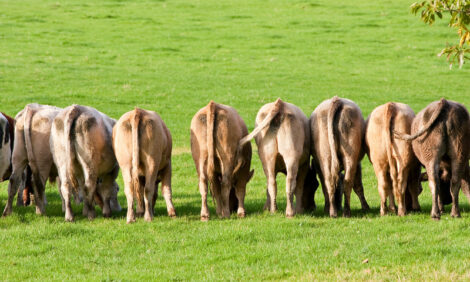



Delay Subsoiling Damaged Grassland
UK - Farmers in rain drenched Britain are being advised not to rush into repairing damaged grassland.Livestock farmers looking to rejuvenate battered permanent pasture and leys that have been subjected to continual rainfall, livestock trampling, and heavy machinery over the past 12 months are being urged to wait until soils have dried out sufficiently before loosening compaction.
The advice, from grassland specialist Richard Hales from GLS grassland subsoiler manufacturer Sumo UK, is backed by independent soil management adviser Philip Wright.
“Subsoiling with an implement, such as our GLS, which fractures the soil to improve drainage and rooting whilst at the same time leaving the surface relatively undisturbed, requires the soil to be dry enough to do the job properly,” suggests Mr Hales.
“But unless they are on the lightest land with a free-draining subsoil, even those farmers who can travel on top now and are keen to get grassland repaired ahead of turn-out or first cut silage, would be well advised to leave subsoiling until after first cuts and grazing are complete. Or consider delaying the process until the late summer/early autumn period.”
He stresses that this applies particularly to clay soils, where hasty use of a subsoiler may aid immediate surface water movement, but is likely to only exacerbate sub-surface problems.
“The likelihood is that any action now, even if it’s just an attempt to encourage the drainage of surface water, will do more damage than good by smearing and compressing the subsoil rather than fracturing it.”
“Hold off subsoiling until soils start to dry out. It’s then that subsoiling will create the desired shattering effect that aids drainage and rooting.”
Philip Wright, whose consultancy Wright Resolutions frequently advises arable farmers with soil structure problems, says many of the same management tips he gives for cropping land management also apply to grassland.
The effects of compaction and poor drainage in long-term pasture have been particularly evident this year, he notes, while many leys still down following last year’s silaging or grazing will have suffered from compaction created by machinery or livestock.
“A spade is just as important to good grassland management – whether leys or permanent pasture – as it is to the assessment of arable soils,” says Mr Wright. “Digging some inspection holes in problem areas is essential to help identify what problems lie underneath the surface, where the compaction layer is and how ‘plastic’ any sub-surface clay is.
“While on some land it may be possible after a few dry days to pull a grassland subsoiler leg through pasture or ley ground without too much surface disturbance, on clay ground in particular the high water soil contents will create a high soil plasticity. This means the point will simply smear an impenetrable channel through the clay, compounding the drainage problem while creating very little shattering.”
Generally, waterlogged soils are the result either of an impervious layer restricting movement down to the drains, or of the drains themselves being blocked, he suggests. Either way, pulling a loosening tine through ‘plastic’ soil will cut a slot and smear the edges.
“While the slot may temporarily cut through the impervious layer and allow some surface water through to drier soil below, this ultimately is not solving the problem of fissuring and loosening the layer, allowing roots to penetrate and hold it open. Such a smeared slot can easily seal back over time or when the damp soil is subsequently trafficked.
“A better way of improving surface water movement in the interim will be to ensure field drains and ditches are clear and running. A good grassland subsoiler is the right tool for improving grassland drainage and rooting, but needs to be used at the right time.”
TheCattleSite News Desk


